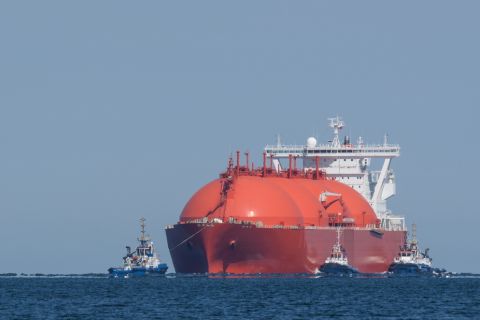The U.S. Energy Information Administration (EIA) on Nov. 8 projected year-over-year dry natural gas production in 2016 would fall for the first time since 2005 as low energy prices reduced drilling activity.
EIA reduced its output projection to its monthly Short Term Energy Outlook (STEO) for 2016 to 72.34 billion cubic feet per day (Bcf/d), down from the 72.49 Bcf/d it forecast last month. That compared with an all-time high of 74.14 Bcf/d in 2015.
EIA forecast dry gas production would return to a record high in 2017, rising to 75.06 Bcf/d.
RELATED: EIA: US Crude Output To Fall Less Than Expected
The last time year-over-year gas production declined was in 2005 when Hurricanes Katrina and Rita slammed into the Gulf Coast, damaging energy infrastructure.
In 2005, more than 20 percent of annual U.S. dry gas output of 49.45 Bcf/d came from the federal waters in the Gulf of Mexico.
Since then, producers have figured out how to use horizontal drilling and hydraulic fracturing and other technologies to unlock more gas trapped in shale rocks.
Today, the seven biggest U.S. shale fields provide more than 60% of the nation's dry gas production, while the Gulf of Mexico accounts for just 4% of the total.
The EIA also forecast U.S. gas consumption would slip to 75.66 Bcf/d in 2016 vs. the 75.97 Bcf/d it forecast in October.
That would still top the 2015 record high for gas demand of 74.81 Bcf/d and would be the seventh annual record in a row.
EIA forecast gas demand in 2017 would rise to a new all-time high of 75.97 Bcf/d.
EIA projected the United States would become a net exporter of gas in the fourth quarter of 2017 as sales of LNG to the world and pipeline flows to Mexico increase, while imports from Canada ease as U.S. production grows.
The U.S. was last a net exporter of gas on an annual basis in 1957, according to federal data.
Power generators, meanwhile were expected to increase the amount of coal they burn in 2017 to 31% from a forecast 30% in 2016 as the price of gas rises. That, however, was still down from 33% in 2015 due to numerous coal plant retirements in recent years.
The power sector was expected to burn less gas to produce electricity next year, just 33% in 2017 vs. a forecast 34% in 2016. That compared with 33% in 2015.
Recommended Reading
IEA: North America to Lead LNG Supply Growth in 2025
2024-10-16 - U.S. LNG projects ranging from Plaquemines LNG Phase 1 to Corpus Christi Stage 3 are set to account for around three-quarters of the global incremental supply coming online in 2025, according to the Paris-based International Energy Agency (IEA).
A Tale of Two Strategies: How Baker Hughes, NOV are Traversing the Natural Gas Age
2024-11-06 - Natural gas demand is on the rise, and with that comes a flurry of measures to capitalize on evolving market needs. How are Baker Hughes and NOV navigating the changing energy landscape?
EDA: Golden Pass LNG Train 1 Still Set for Startup in 1Q26
2024-09-05 - East Daley Analytics continues to eye the first train from the 18 mtpa Golden Pass LNG flowing in the first quarter 2026, despite requests by Golden Pass for more time to construct the facility.
As US Ethane Production Soars to Record High, Low Prices Expected
2024-10-29 - Tied to natural gas production, which has suffered from weak demand, ethane is also headed for bearish prices, according to an analyst.
Francine Closes, Restricts Oil Export Ports, Shuts in 42% of GoM Oil
2024-09-13 - In addition to hampering ports and refineries, an estimated 41.74% of Gulf of Mexico oil production, or 730,472 bbl/d, has been shut in.





